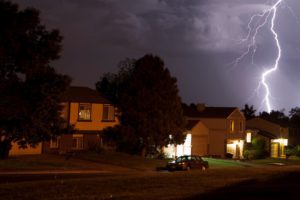The move from day-to-day tactical to long-term strategic energy management is an accelerating trend for today’s energy managers. In a June 2014 webinar on energy management trends, we surveyed nearly 200 U.S. energy management leaders and found that 52% of them are still in the early stages of assessing what they need to transition to a long-term strategic plan.
If you are new to your role or are just starting your strategic planning, this is a golden opportunity to learn from your peers who have already begun this journey. Learning from your peers can help you future proof your role as you prepare your organization’s future direction. You may also want to check out my earlier blog, “The Changing Role of Energy Managers,” which describes key industry trends including the major shift from tactical to strategic energy management.
What’s more, the blog below highlights some of the key goals your peers are trying to achieve with their energy management strategies and service options you should consider to help you develop and deploy your own energy plan.
Strategic Energy Management Goals
With energy management becoming increasingly complex, all energy managers should be reassessing where they are and where they want to go. We asked these very questions to the energy management leaders who attended the June webinar. Improved performance and long-term strategic planning rose to the top of the list when we surveyed them on their key concerns and challenges.
What are your key concerns/challenges around energy management? (n=871 responses)
We also asked these energy management professionals about their top priorities and 57% reported that some type of data monitoring, collection or reporting was their top priority in the next 12 months.
What’s your top priority for energy management improvements in the next 12 months? (n=198 responses)
Converting Strategy to Action: What Are Your Options?
Now is the time to start thinking about your own action plan. Depending on the maturity of your organization’s energy management program and installed hardware and software infrastructure, you have three energy management service options to help you achieve your goals.
1. Ongoing Assessments
Ongoing assessments are periodic health checks for your facilities versus one-time events such as audits. They can identify and prioritize areas for future energy assessments, as well as provide recommendations that can result in immediate improvements. The frequency of assessments needed is determined by the age and condition of your facility, the complexity of energy systems, etc.
The old adage, “prevention is better than cure,” is the main driver behind the need for these ongoing assessments. Taking this approach can help avert major and expensive breakdowns or repairs, and ensure you are getting the most out of your investment. For a single facility, the average amount of lost revenue caused by power-quality related downtime is $130,000 and it can take a plant up to 17 hours to restart. Ongoing Assessments can include Energy, System and Power quality health checks.
2. Remote Monitoring
Typically, continuous remote monitoring services provide ongoing visibility into your energy-related data and also identify and act on improvements such as fine-tuning systems and alarm management. This service option enables you to not only identify issues, but also make corrective actions remotely that can drive energy savings. It allows you to achieve a higher level of savings than assessments alone.
Some companies have their own teams fully dedicated to this task, but many clients are finding that they would prefer to outsource this activity because of their limited resources and lack of expertise in running such a program.
3. Onsite and Remote Energy Management
This option is a combination of remote and onsite services that delivers energy optimization with the potential for the greatest savings. Today, this service is mainly accomplished through a partnership between internal client resources and a dedicated energy management vendor. Based on performance, it’s usually the optimal solution for most types of facilities. This option enables predictability of budget and a guaranteed ROI which supports future strategy and investments and can achieve 10 to 30% energy savings.
To learn more about how this type of partnership really works, you can read a great case study about the Dallas Museum of Art’s transition from a tactical to a strategic energy management plan in the eBook, “Trends in Energy Management: Where Should Your Next Investment Be?”
In-house Resources Vs Outsourcing
After reading about the above energy management service options, you may be wondering when to leverage existing staff and when to seek help externally. In “The State of Global Energy Management” report by Verdantix in August 2013, a survey of global energy leaders indicated that 63% of energy managers in North America are now outsourcing some of their key energy management functions . . ….. that’s the highest level of energy management outsourcing globally.
If you’re wondering why, the answer is being driven by two competing trends that are impacting energy management jobs in very different ways.
1. Clients’ staffs are simply stretched too thin to deliver optimal performance from their existing systems. The reality is that energy management is not a one-and-done task, but rather an ongoing management function that requires constant monitoring, adjustments and fixes.
2. As technology evolves and systems become increasingly complex, clients’ staffs cannot keep up with training on new functionality and features of these system, and thus do not achieve the best return on the facility’s investments. The difficult reality is that these time- and expertise-strapped staffs are struggling to simply keeping their systems running, rather than driving optimal performance.
Sometimes, firms have shied away from looking for external support, but many clients understand that adding the right kind of support is not traditional outsourcing, but rather a way to provide help to existing staff in areas that require specialized training or experience. In the end, the best energy management programs have strong partnerships between internal staff and external experts.
As always, I welcome your feedback, so write a comment and tell me about where you are in your energy management journey. Peer-to-peer guidance is always a valuable resource.



